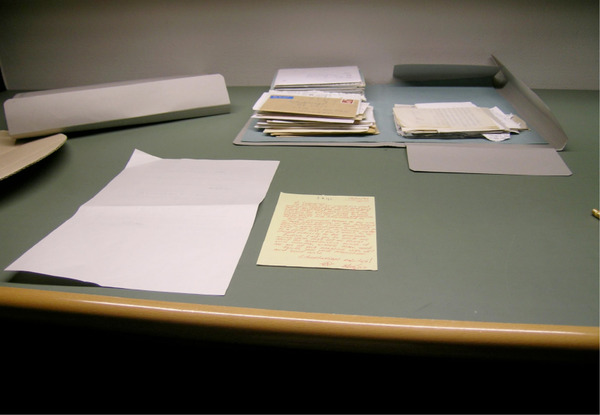Clutching cups of tea from thermos flasks to warm our hands on a cold evening in a classroom-like space at NASA (New Art Space Amsterdam), I and roughly thirty others listened to a Dutch film maker expressing his love for a 19th century anarchist. Cees Hin, one of the evening’s speakers, had grown great affection for Voltairine de Cleyre. Especially after googling her name and seeing her eyes – her words had apparently made less of an impression on him than her looks. De Cleyre (1866 - 1912), admittedly, was a beautiful woman. But her text, Why I am an Anarchist (1897), deserves a closer look. It describes De Cleyre's thoughts on American society at the time as well as her political ideals. Elaborating on the title's statement, she explains her driving forces: in her words, the possession of an active mind and a large proportion of sentiment. Offering vivid opinions about society's shortcomings she describes how she craved, above everything, to be free. She desired freedom “from conventional dress, speech and custom”, as well as a more general liberation, such that people would not live as captivated consumers in a money driven world. Brilliantly accurate even to this day, De Cleyre also touches on the carbon footprint debacle, hoping that “people would realise (…) that the vast mass of this dragging products up and down the world (...) is economic insanity.”

Nicoline van Harskamp, Yours in Solidarity; Courtesy of the artist and New Art Space Amsterdam / Photo: Maarten Kools.
The readings provide a historical and theoretical framework for the exhibition Yours in Solidarity, in which artist Nicoline van Harskamp explores the legacy of Dutch activist Karl Max Kreuger (1964 - 1999). Kreuger was in contact with his fellow anarchists on a global scale and he maintained connections to them throughout his lifetime. His legacy is in his letters – there are hundreds of them, which now constitute the archive from which this exhibition derives its ostensible subject. Van Harskamp, who had herself exchanged thoughts with Kreuger on paper, explored this correspondence archive, choosing sixty of Kreuger’s addressees for further research. To glean a sense of the writers’ personalities, she analyzed their handwriting wherever possible. The exhibition’s first room at NASA is allocated to this endeavor. Letters neatly line the walls, accompanied by van Harskamp’s analyses with marks and comments scribbled over them. In the same room, van Harskamp beams text from spoken interviews in white words onto black boards. The wide range of Kreuger’s correspondents becomes clear from watching the projections and reading snippets of the letters. We don’t need to see writers’ faces, “nice eyes”, or even know their names. A twenty-year-old Chilean girl and a “friendly, down to earth” Israeli debunk the general anarchist stereotype.

Nicoline van Harskamp,Yours in Solidarity, first opening of the archive; Courtesy of the artist and New Art Space Amsterdam / Photo: Nicoline van Harskamp.
In the next room, van Harskamp's project truly begins to unfold. Here it becomes apparent that she hired actors and conducted interviews to further investigate the archive. The actors’ characters, based on the sixty writers, are asked about their beliefs and driving forces, how they feel about freedom and their country’s politics. As with the letters, these aren’t coherent stories. Short bits of information set the tone. The work seems more about getting a feel of this global movement, of all these people brought together by one man. It isn't until the next room that we fully understand the scope of van Harskamp's endeavors. Three large screens appear to feature a documentary film showing the actors together in a meeting. They passionately discuss the things they would fight for, recalling an imagined scenario that could happen were all the letter writers to meet today. Words lead to actions; language breeds change.
Van Harskamp succeeds at making these people come to life, and at displaying their ideas and discontents. In the evenings of readings she's hosting at NASA, Reading Anarchism, she encourages debate. It's evident that van Harskamp is no dispassionate observer. She aims to reinvigorate this movement – she's part of the same school, and she wants you to take part. Being immersed in these words and ideas should spark a desire to read, to investigate, to know more. It's a challenge, but it’s worth it.
(Image on top: Nicoline van Harskamp, Yours in Solidarity, Installation at Manifesta 9, 2012; Courtesy of the artist and New Art Space Amsterdam/ Photo by Kristof Vrancken)